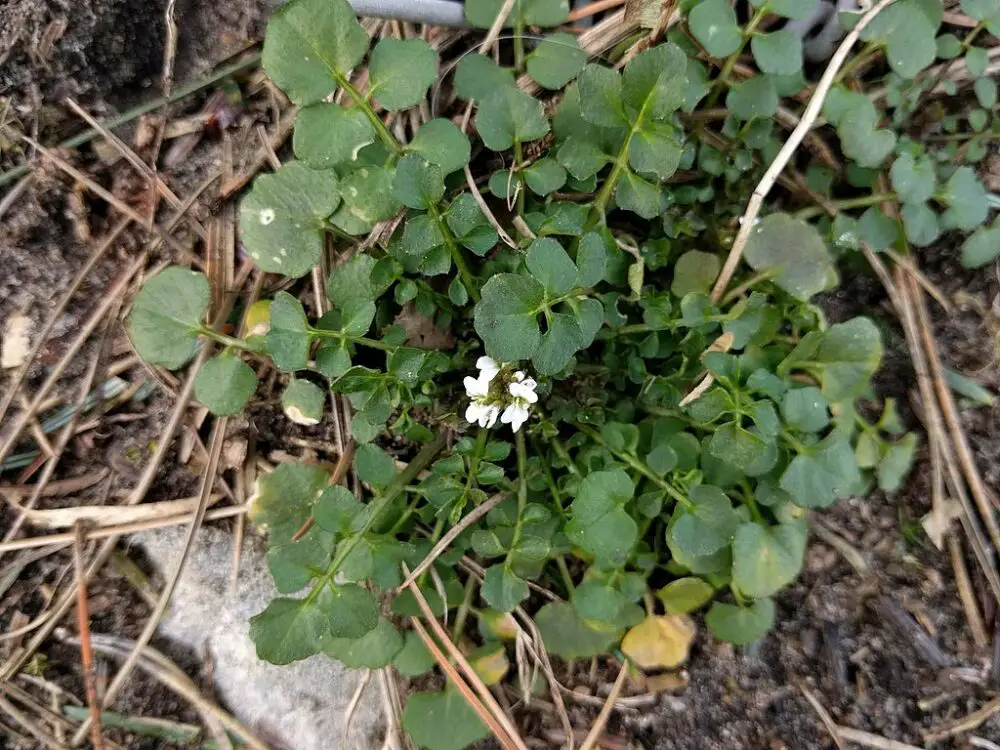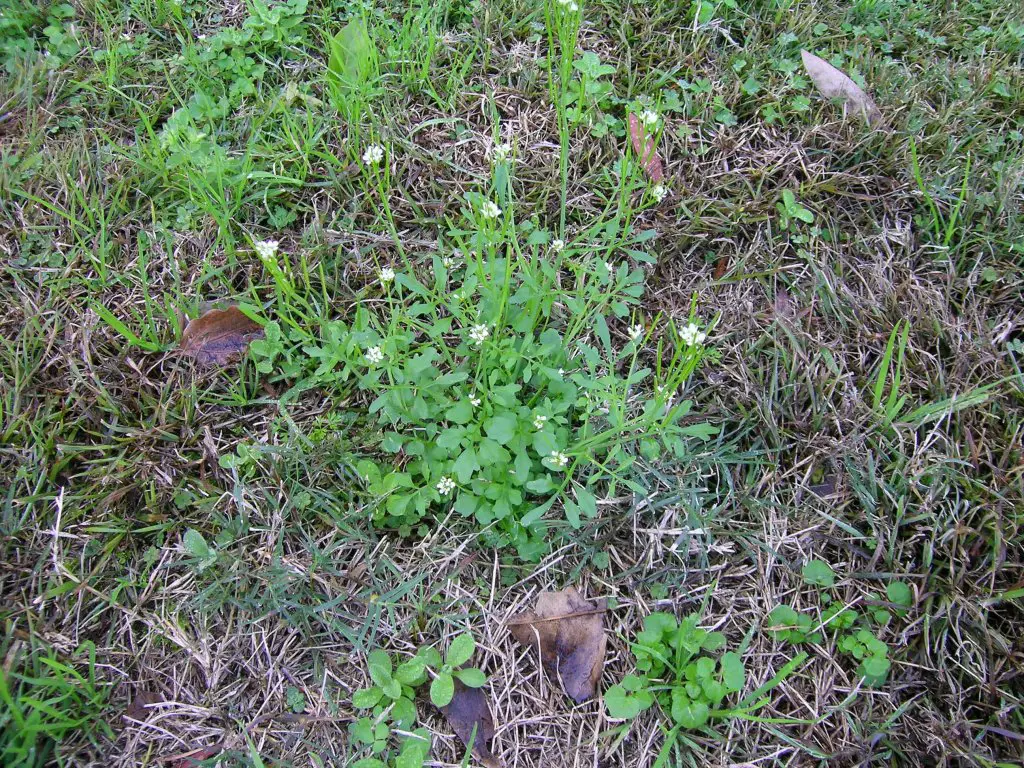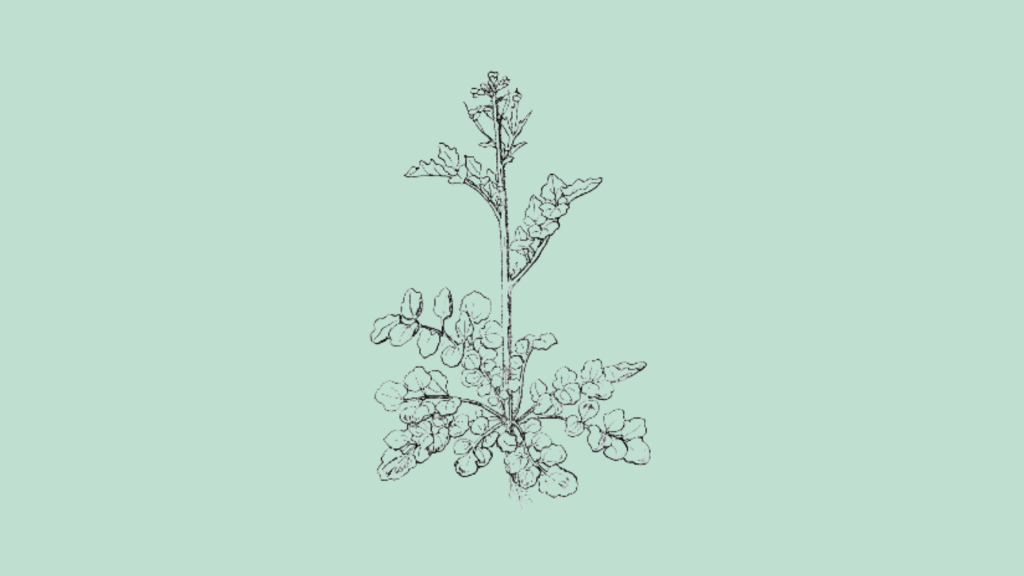Despite its unfortunate name, hairy bittercress is a delicious edible perennial or biennial lawn weed perfect for foraging. Since it is a wild member of the mustard family, its bitterness is more spicy than bitter and not nearly as hot as some other mustard relatives.
Hairy bittercress plant profile
| Scientific name | Cardamine hirsuta |
| Family | Brassicaceae (mustard family) |
| Plant type | Winter annual weed |
| Kingdom | Plantae |
| Genus | Cardamine |
Common names include:
- Bittercress
- Flick weed
- Hoary bittercress
- Lamb’s cress
- Land cress
- Shot weed
- Spring cress
Hairy Bittercress identification
This delightful, strong-tasting plant is available throughout the year. One of the smaller mustard species, hairy bittercress, has compound leaves composed of tiny leaflets arranged pinnately along leaf stalks which rarely exceed six inches and a single leaflet at the tip.
On younger plants, the leaves emanate from a basal rosette that is more evident before the larger leaves obscure it. The flower stalks may be red or green, and the leaves that grow from the flower stalks are narrower and longer than the leaflets on the main plant.
What Are You Foraging For Right Now?
We're thrilled to hear your ideas. What would you like to submit today? Feel free to share your thoughts and experiences with us.
The tiny 2 mm white flowers are produced on a single, smooth stalk at the center of the plant’s basal rosette as buds and consist of four white petals in the shape of a crucifix – hence the family name Cruciferae (now Brassicaceae) and the term “cruciferous.”

Hairy bittercress first blooms with a single flower at the end of the flower stalk. The petals of the flower fall away when the flower is finished, leaving behind green seed pods.
The flower stalk will continue to grow as the seed develops, forming new flowers arranged alternately along the stalk.
After drying out, hairy bittercress seed pods, or siliques, turn brown. Newer flowers develop toward the base of the stalk.

Is hairy bittercress a herb?
This plant is considered a wild herb and great for beginner foraging.
An herb is any plant with seeds, leaves, or flowers used for food, flavoring, perfume, or medicine.
In the world of botany, it is defined as any seed-bearing plant that doesn’t have a wood-like stem and dies down to the ground after it flowers.
Where does it grow?
North America’s west coast is dominated by hairy bittercress, which can be found throughout the east and south of the United States.
Like chickweed, which can often grow nearby, this weed thrives in cooler weather. As the temperature rises, it dies back in late spring or summer. When the weather is extremely cold, it remains dormant.
Throughout the fall, winter, and early spring, hairy bittercress appears to flourish in moist, disturbed soil, such as that found in yards and gardens.
Since it occurs during the colder months, its vibrant green leaves stand out against the background of gray and brown.
Is hairy bittercress edible?
Yes, you can eat its tender greens. Despite its common name, this herb has a mild, peppery flavor, not bitter.
The entire plant is edible, including the blooms, and is an excellent source of vitamin C.
Its flavor profile is similar to that of watercress, but bittercress is more readily available, making it an excellent substitute for microgreens.
Are any parts toxic to pets?
Hairy bittercress is not considered toxic to pets, at least in small amounts.
Hairy bittercress kitchen uses
It is recommended to use hairy bittercress as soon as possible to prevent wilting. Some people prefer to eat it fresh from the field, but you may wish to rinse it quickly to remove dirt and grit and discard the stems, which are bitter.
Hairy bittercress has many kitchen uses, including:
- Sandwiches
- Soups
- Salads
- As a garnish
- Stirred into yogurt
- Sprinkled over baked potatoes
- Incorporate into hot pasta dishes
- Float blooms on gazpacho or other soups
- Roast a few sprigs with baby beetroots or other root vegetables
Besides being edible, the roots can also be combined with vinegar to create a sauce or dip similar to horseradish.
Is hairy bittercress good for gardens?
Hairy bittercress poses a pest problem for gardeners because it tends to be invasive. As with any invasive weed, the best way to control it is to prevent it from taking over your garden.
To prevent it from spreading relentlessly, pull the plants in late winter before they go to seed. Unfortunately, hairy bittercress uses ballistic dispersal, or ballochory, to disperse its seeds.
Plants produce 600 to 1,000 seeds per plant between late summer and early fall, so if you wait until the seeds are ready to burst, you risk launching a several hundred-seed invasion of your garden.
Ana has always been interested in all things nature and flora. With her expertise in home gardening and interest in foraging, she has been spending her weekends and free time looking for edible native plants, flowers, and fungi. One of her many hobbies includes testing new savory and sweet recipes, juices or teas made from freshly picked plants, wild fruits, or mushrooms.

